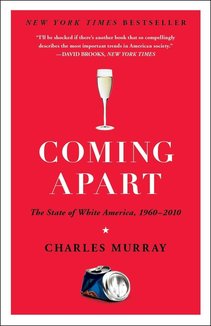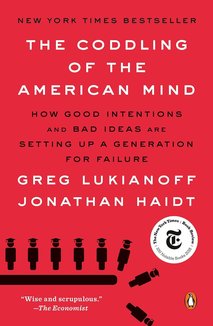Recommended Books

James S A Corey Expanse Series 8 Books Collection Set (Leviathan Wakes, Caliban's War, Abaddon's Gate, Cibola Burn, Nemesis Games, Babylon's Ashes, Persepolis Rising, Tiamats Wrath)
Author:
James S.A. Corey
ISBN 13:
978-0678452547

Coming Apart: The State of White America, 1960-2010
Author:
Charles Murray
ISBN 13:
978-0307453433
NEW YORK TIMES BESTSELLER • A fascinating explanation for why white America has become fractured and divided in education and class, from the acclaimed author of Human Diversity . “I’ll be shocked if there’s another book that so compellingly describes the most important trends in American society.”—David Brooks, New York Times In Coming Apart , Charles Murray explores the formation of American classes that are different in kind from anything we have ever known, focusing on whites as a way of driving home the fact that the trends he describes do not break along lines of race or ethnicity. Drawing on five decades of statistics and research, Coming Apart demonstrates that a new upper class and a new lower class have diverged so far in core behaviors and values that they barely recognize their underlying American kinship—divergence that has nothing to do with income inequality and that has grown during good economic times and bad. The top and bottom of white America increasingly live in different cultures, Murray argues, with the powerful upper class living in enclaves surrounded by their own kind, ignorant about life in mainstream America, and the lower class suffering from erosions of family and community life that strike at the heart of the pursuit of happiness. That divergence puts the success of the American project at risk. The evidence in Coming Apart is about white America. Its message is about all of America.

The Coddling of the American Mind: How Good Intentions and Bad Ideas Are Setting Up a Generation for Failure
Authors:
Jonathan Haidt
,
Greg Lukianoff
ISBN 13:
978-0735224919
New York Times Bestseller • Finalist for the 2018 National Book Critics Circle Award in Nonfiction • A New York Times Notable Book • Bloomberg Best Book of 2018 • One of Bill Gates’s Top Five Books of All Time “Their distinctive contribution to the higher-education debate is to meet safetyism on its own, psychological turf . . . Lukianoff and Haidt tell us that safetyism undermines the freedom of inquiry and speech that are indispensable to universities.” —Jonathan Marks, Commentary “The remedies the book outlines should be considered on college campuses, among parents of current and future students, and by anyone longing for a more sane society.” — Pittsburgh Post-Gazette Something has been going wrong on many college campuses in the last few years. Speakers are shouted down. Students and professors say they are walking on eggshells and are afraid to speak honestly. Rates of anxiety, depression, and suicide are rising—on campus as well as nationally. How did this happen? First Amendment expert Greg Lukianoff and social psychologist Jonathan Haidt, author of The Anxious Generation, show how the new problems on campus have their origins in three terrible ideas that have become increasingly woven into American childhood and education: What doesn’t kill you makes you weaker ; always trust your feelings ; and life is a battle between good people and evil people . These three Great Untruths contradict basic psychological principles about well-being and ancient wisdom from many cultures. Embracing these untruths—and the resulting culture of safetyism—interferes with young people’s social, emotional, and intellectual development. It makes it harder for them to become autonomous adults who are able to navigate the bumpy road of life. Lukianoff and Haidt investigate the many social trends that have intersected to promote the spread of these untruths. They explore changes in childhood such as the rise of fearful parenting, the decline of unsupervised, child-directed play, and the new world of social media that has engulfed teenagers in the last decade. They examine changes on campus, including the corporatization of universities and the emergence of new ideas about identity and justice. They situate the conflicts on campus within the context of America’s rapidly rising political polarization and dysfunction. This is a book for anyone who is confused by what is happening on college campuses today, or has children, or is concerned about the growing inability of Americans to live, work, and cooperate across party lines.